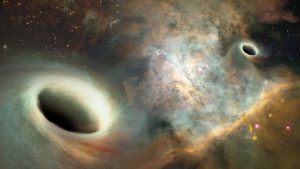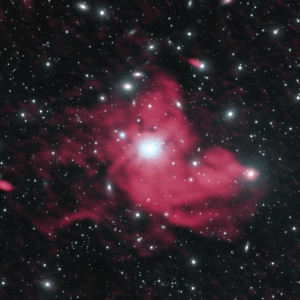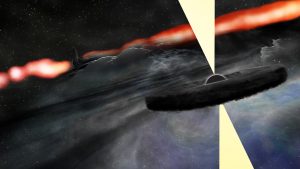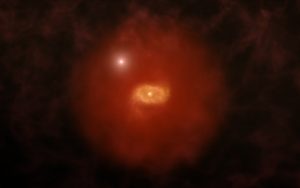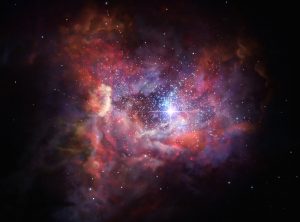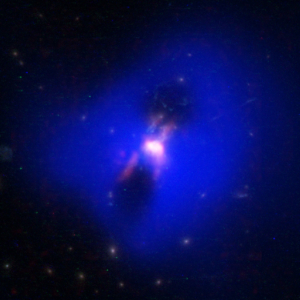VLBA images detect orbital motion of two supermassive black holes as they circle each other at the center of a distant galaxy.
VLA Gives New Insight Into Galaxy Cluster’s Spectacular “Mini-Halo”
New VLA images are helping astronomers understand the origin of a giant radio-emitting structure in a cluster of galaxies.
VLA Reveals New Object Near Supermassive Black Hole in Famous Galaxy
Astronomers were surprised when the VLA revealed that a bright new object has appeared near the core of a famous galaxy. They think it’s a second supermassive black hole, indicating that the galaxy has merged with another in the past.
Milky Way-like Galaxies in Early Universe Embedded in ‘Super Halos’
ALMA sees young Milky Way-like galaxies in the early universe.
Most Distant Object Ever Observed by ALMA
A dusty galaxy is seen about 13 billion light-years away.
Black-Hole-Powered Jets Forge Fuel for Star Formation
Powerful radio jets enable cold gas to form in heart of the Phoenix Cluster.






